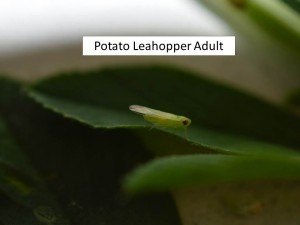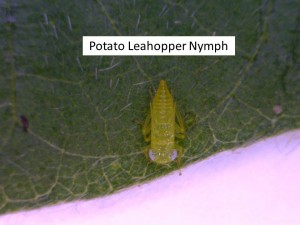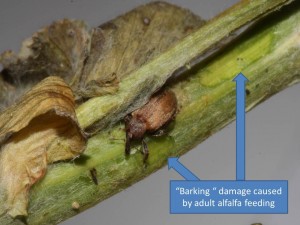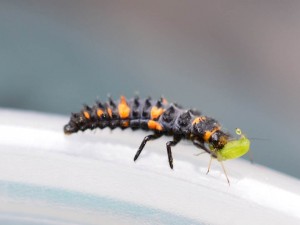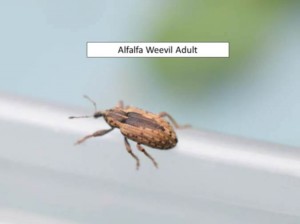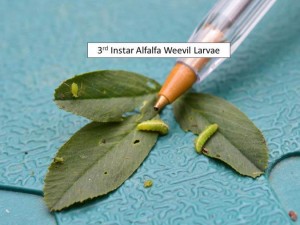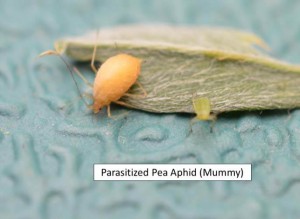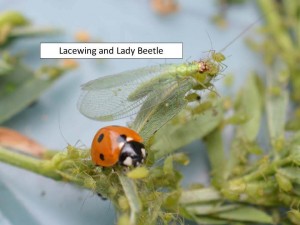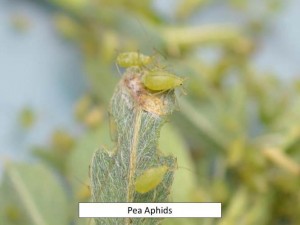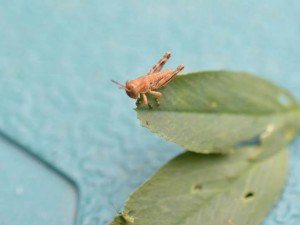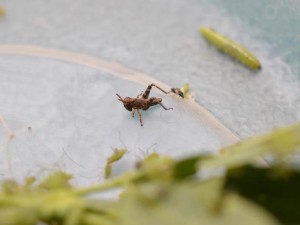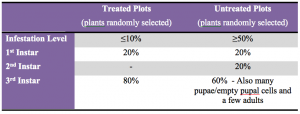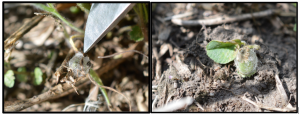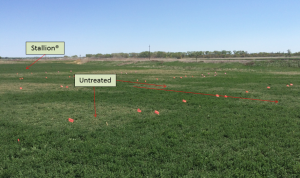–by Dr. Jeff Whitworth and Dr. Holly Schwarting
Alfalfa can be kind of a forgotten crop during this very busy time of year. Most growers are busy planting sorghum, soybeans, sunflowers, and/or harvesting wheat, working wheat ground, etc. This year, so far, has been a rough one for swathing and baling alfalfa. Now, there are substantial infestations of potato leafhoppers, both adults and nymphs. Potato leafhoppers can be quite damaging from now until fall.
Both nymphs and adults feed by sucking juice from the plant and in so doing inject a toxin into the plants. This can cause serious yellowing of the leaves, and even stems, if it continues for very long. Generally, swathing and hay removal will disrupt this feeding and remove the leafhoppers from the fields. They rarely re-infest fields after this physical removal or after an insecticide application, if that is justified. If swathing is possible within the next 7-10 days, that should take care of the potato leafhopper problem. However, be sure to keep scouting these fields as the damage caused by potato leafhoppers usually occurs much before the yellowing is noticed. This feeding damage is cumulative – the stressed plants don’t seem to regain their original vigor and therefore don’t ever yield as much tonnage as expected.
